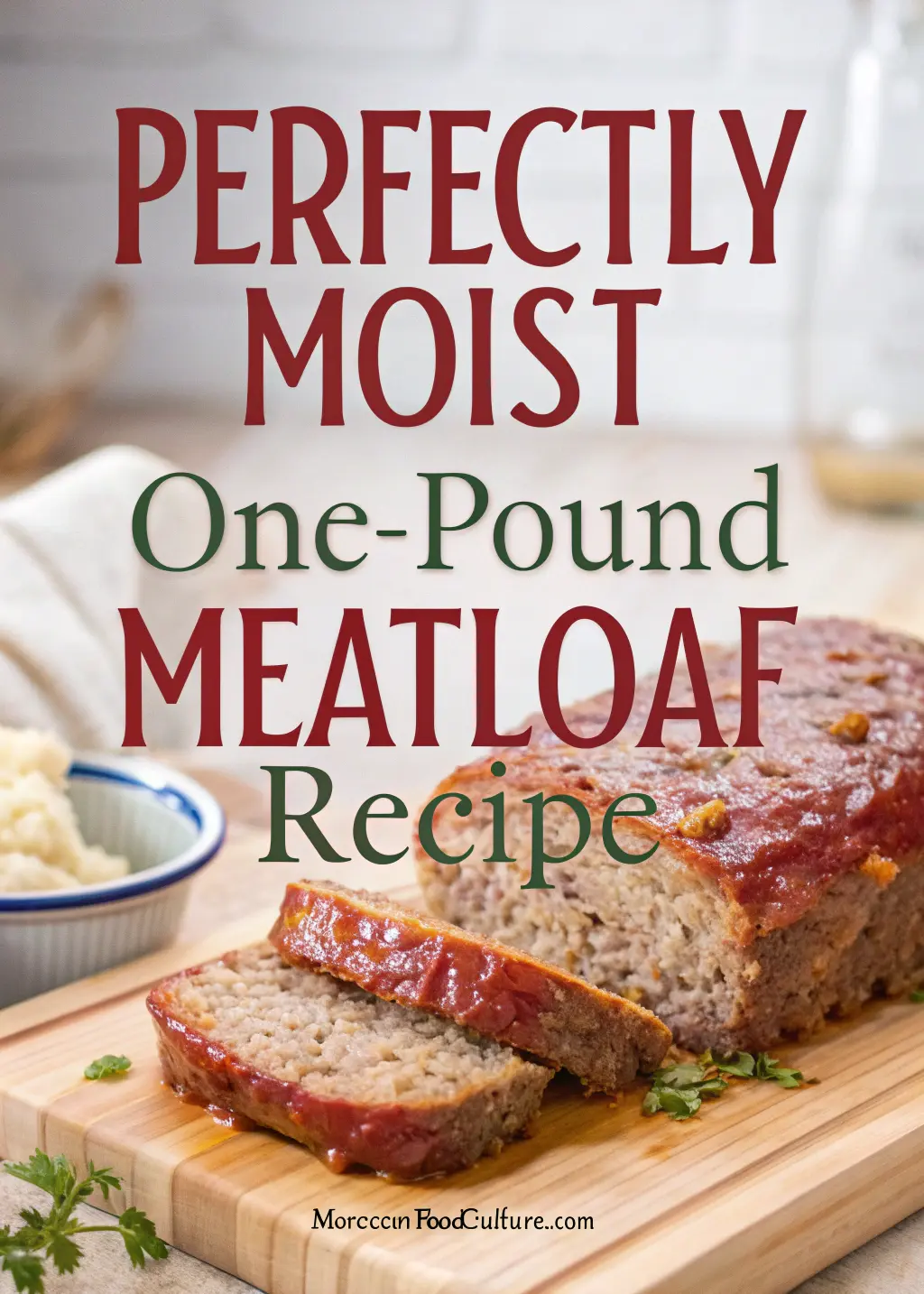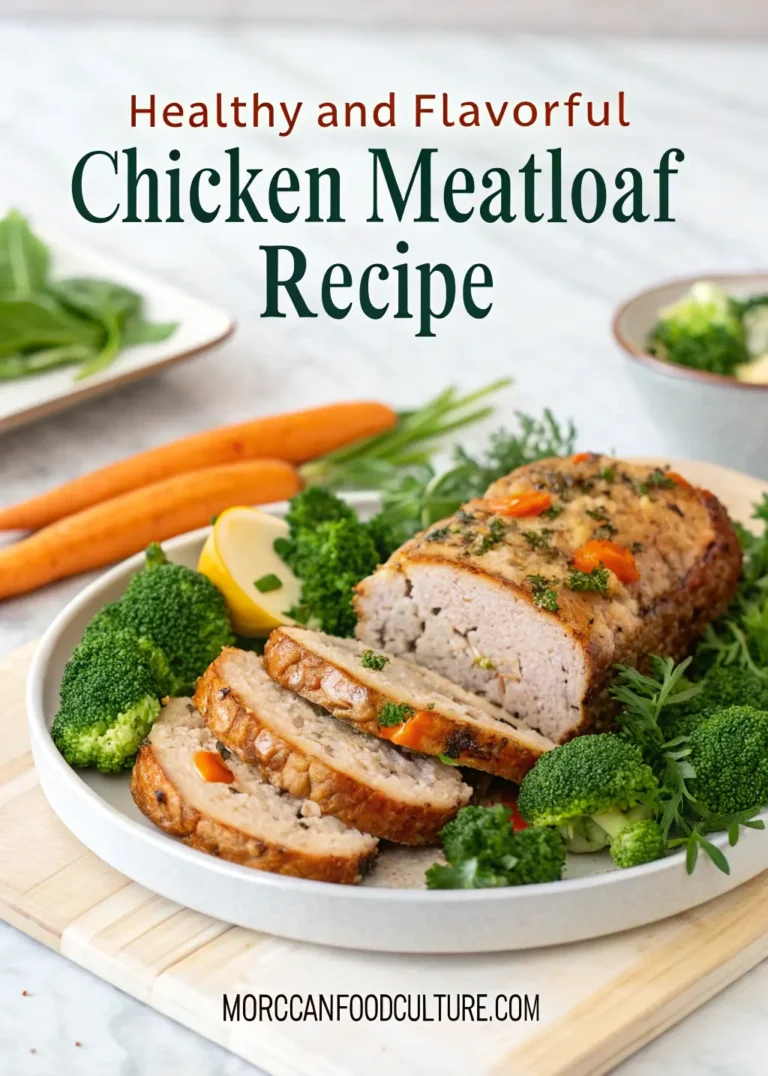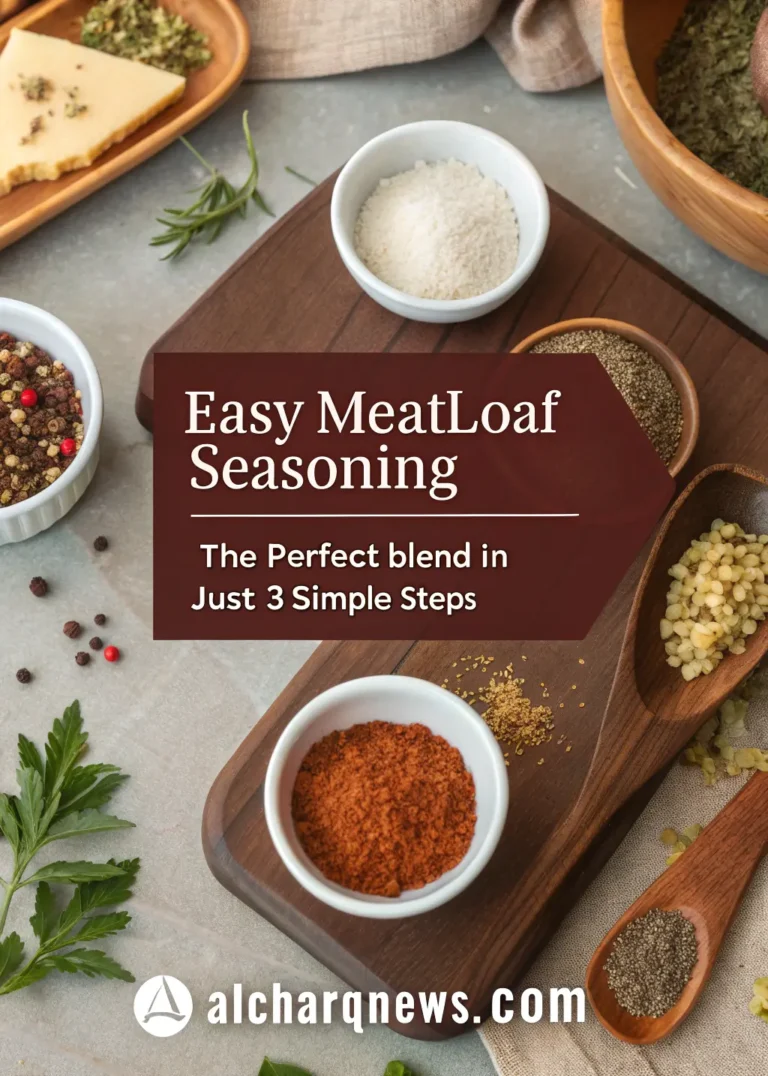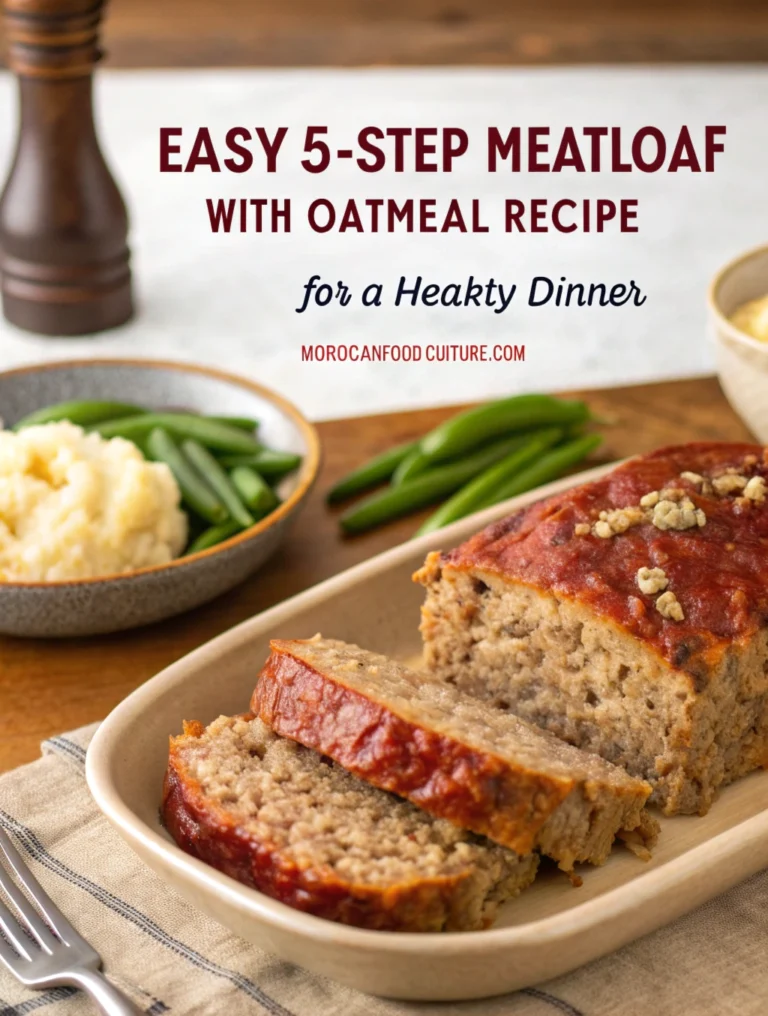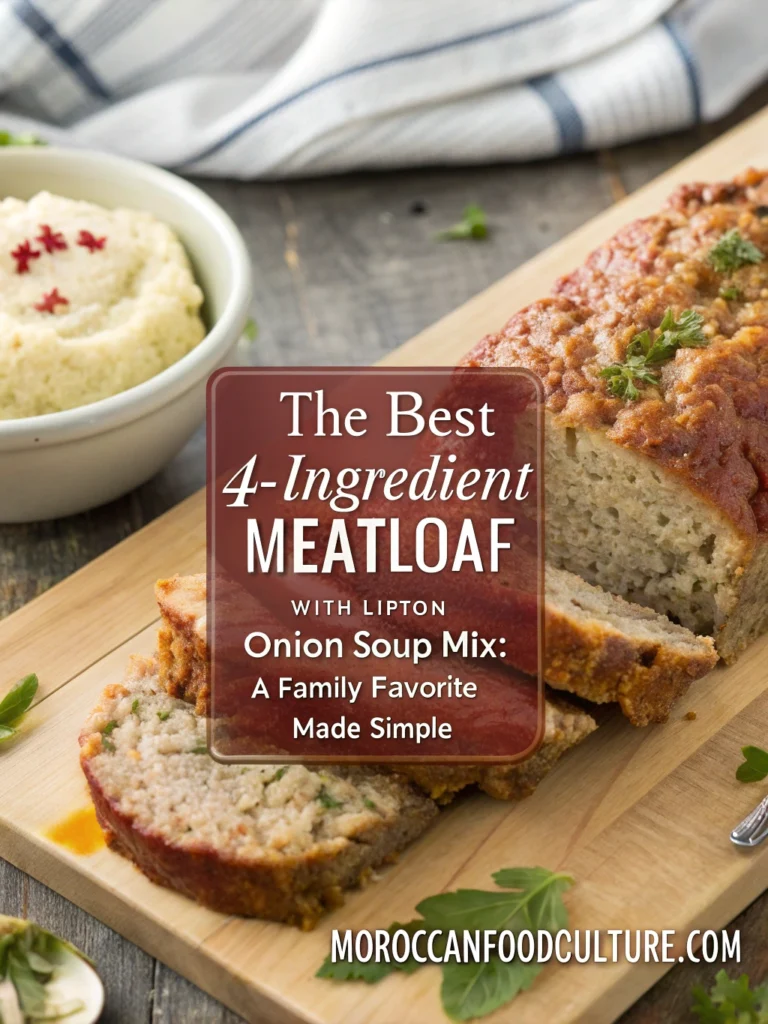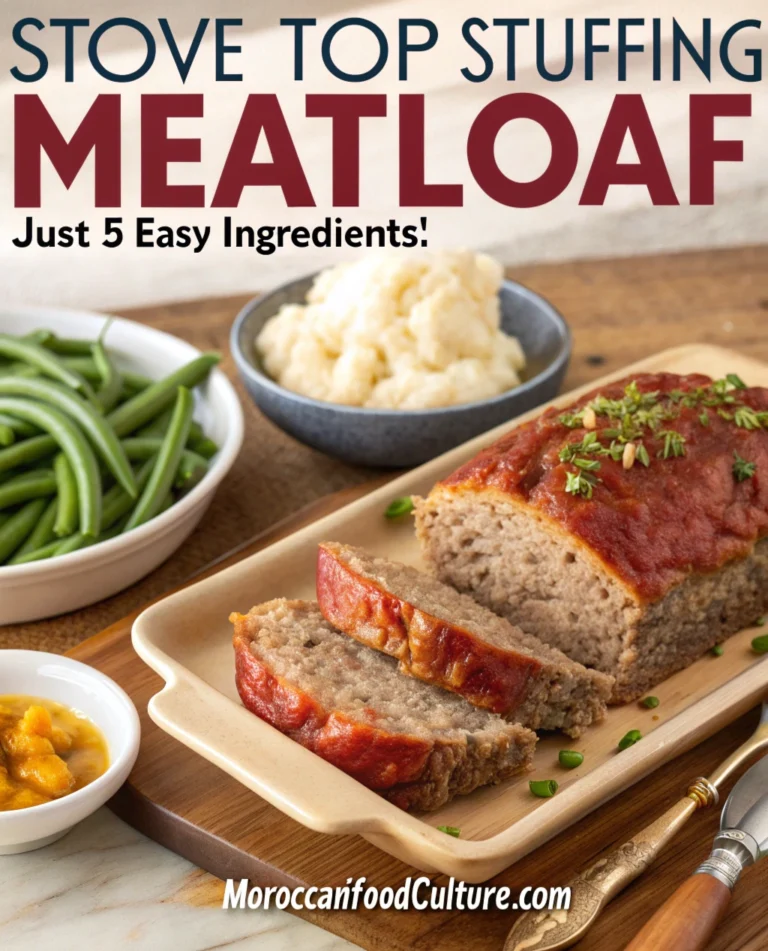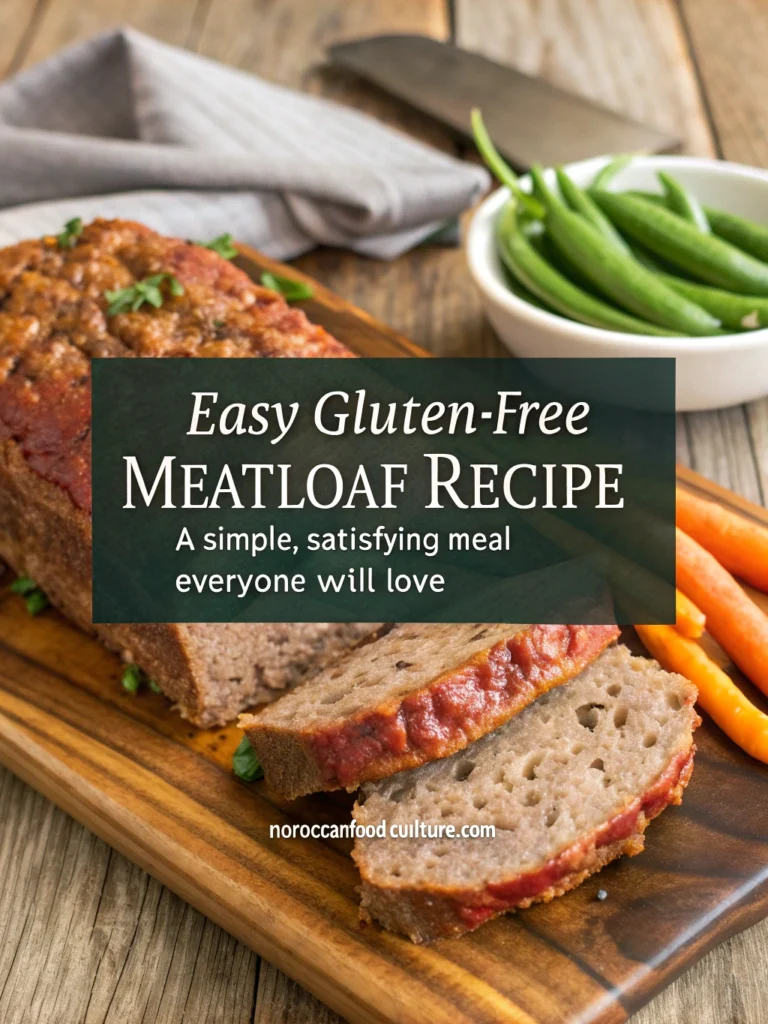The Ultimate Guide to a Perfectly Moist One-Pound Meatloaf Recipe
Introduction: The Comfort of Homemade Meatloaf
The gentle sizzle from the oven, that unmistakable savory aroma wafting through the kitchen—few dishes evoke such profound comfort as a homemade meatloaf. Beyond mere sustenance, a perfectly moist one-pound meatloaf carries the weight of tradition, family gatherings, and cherished memories of meals shared around weathered dining tables.
Perhaps you’ve attempted meatloaf before, only to end up with a disappointing brick that crumbled upon slicing or, worse yet, resembled sawdust in texture. The quest for that elusive juicy, tender bite often feels like chasing culinary shadows. But worry no more—this guide unlocks the secrets to creating that perfect one-pound meatloaf, ideally sized for smaller households while preserving the soul-satisfying qualities that make this dish a perennial favorite.
This isn’t just another recipe—it’s a culinary roadmap crafted through countless kitchen trials, family feedback sessions, and technique refinements. By journey’s end, you’ll possess the knowledge to create a meatloaf that remains wonderfully moist from first bite to last, adaptable to your pantry’s contents, and worthy of becoming your signature dish.
Table of Contents
Why This One-Pound Meatloaf Recipe Stands Apart
Standing before the butcher counter contemplating ground meat options, you might wonder what truly separates extraordinary meatloaf from its mediocre counterparts. This recipe triumphs where others falter for several compelling reasons:
- Precisely portioned for 2-3 diners with just enough for coveted next-day sandwiches
- Incorporates science-backed moisture-retention methods that prevent the dreaded dryness
- Balances classic flavors while introducing subtle enhancements for contemporary palates
- Streamlines preparation without sacrificing the rich, developed flavors of traditional recipes
The Science Behind a Perfectly Moist Meatloaf
Understanding the “why” behind meatloaf’s texture transforms you from recipe-follower to culinary artist. When ground meat cooks, protein strands contract, squeezing out moisture—the primary culprit behind dry results. This scientific reality demands strategic countermeasures.
The magic begins with fat content. Unlike leaner cuts that produce parched results, ground meat with approximately 20% fat provides necessary moisture insurance. This fat slowly renders during cooking, basting the protein from within.
Furthermore, the bread-and-milk mixture (technically called a panade) serves as a crucial moisture reservoir. As the meat proteins heat and contract, this panade releases moisture back into the mixture, ensuring tenderness throughout. Think of it as building internal irrigation channels throughout your meatloaf.
Temperature vigilance completes this scientific approach. Cooking at moderate heat (350°F) allows for even protein coagulation without excessive moisture loss, while removing your meatloaf at precisely 160°F internal temperature prevents overcooking—perhaps the most common moisture-robbing mistake home cooks make.
Essential Ingredients for Your One-Pound Meatloaf
Meat Selection and Preparation
The foundation of exceptional meatloaf begins at the meat counter. Consider these options carefully:
| Meat Type | Fat Percentage | Flavor Profile | Best For |
|---|---|---|---|
| Ground Beef | 80/20 | Rich, traditional | Classic texture |
| Beef/Pork Mix | 85/15 | Complex, savory | Enhanced juiciness |
| Beef/Turkey Mix | 90/10 | Lighter, leaner | Lower fat option |
| All Ground Turkey | 93/7 + added fat | Mild, takes on seasonings | Health-conscious diners |
While standard recipes often default to beef, exploring combinations yields fascinating results. The beef-pork blend delivers remarkable juiciness with subtle complexity, while adding just 25% ground pork transforms an ordinary meatloaf into something distinctly memorable.
Complete Ingredient List
Gather these components before beginning your culinary adventure:
| Ingredient | Amount | Purpose |
|---|---|---|
| Ground meat blend | 1 pound | Main protein |
| Bread crumbs | 1/3 cup | Binding & moisture retention |
| Milk | 1/4 cup | Moisture & tenderness |
| Egg | 1 large | Structure & binding |
| Onion | 1/4 cup, finely diced | Flavor & moisture |
| Bell pepper | 2 tbsp, finely diced | Flavor & color |
| Garlic | 2 cloves, minced | Aromatic depth |
| Worcestershire sauce | 1 tbsp | Umami enhancement |
| Ketchup | 2 tbsp (plus more for glaze) | Flavor & moisture |
| Italian seasoning | 1 tsp | Herbal notes |
| Salt | 3/4 tsp | Flavor enhancement |
| Black pepper | 1/2 tsp | Balanced seasoning |
| Brown sugar (for glaze) | 2 tbsp | Caramelization |
| Dijon mustard (for glaze) | 1 tsp | Tangy depth |
Step-by-Step One-Pound Meatloaf Preparation
Preparation Phase
Begin your meatloaf journey with careful ingredient preparation—a step many rush through yet determines much of your final result.
- Panade Preparation The humble panade—seemingly simple yet transformative. Combine breadcrumbs with milk in a small bowl, stirring gently until all crumbs are moistened. Allow this mixture to rest for 5-10 minutes, transforming into a soft, paste-like consistency. This unassuming mixture performs culinary magic, creating microscopic barriers between meat proteins that prevent tight binding and resulting toughness.
- Veggie Sautéing (Optional but Recommended) While many recipes add raw vegetables directly to meatloaf, briefly sautéing diced onions, bell peppers, and garlic until just translucent (about 3-4 minutes) releases their aromatic compounds and removes excess moisture that could otherwise steam your meatloaf from within. Allow these to cool completely before incorporating—adding hot vegetables partially cooks your meat prematurely, creating texture inconsistencies.
Mixing and Forming Your One-Pound Meatloaf
- Proper Mixing Technique Place your ground meat in a spacious mixing bowl, creating a slight well in the center. Add the panade, cooled vegetables, egg, seasonings, and remaining wet ingredients. Now comes a critical moment—mix using clean hands (your best culinary tools) with a gentle folding motion rather than aggressive kneading. When streaks of ingredients disappear and the mixture looks uniform but still loose, stop immediately. Overmixing compresses the meat proteins, creating a dense, tough final product—the antithesis of the tender texture we’re pursuing.
- Loaf Formation Options Your baking vessel significantly influences your meatloaf’s final character: Container Type Dimensions Benefits Cooking Time Adjustment Loaf pan 8.5″ × 4.5″ Classic shape, contained fat None Sheet pan Free-form loaf Better crust development Reduce by 5-10 mins Mini loaf pans 3 mini pans Individual servings Reduce by 15 mins For loaf pans, gently press the mixture in without compacting. For free-form loaves, shape into a rectangle approximately 8″ long by 4″ wide with slightly rounded edges, maintaining even thickness throughout.
The Perfect Glaze for One-Pound Meatloaf
While optional, glaze transforms ordinary meatloaf into something truly special. The classic mixture combines 4 tablespoons ketchup, 2 tablespoons brown sugar, and 1 teaspoon Dijon mustard, creating a sweet-tangy lacquer that caramelizes beautifully.
For more adventurous palates, consider these variations:
- Maple-bourbon glaze (2 tbsp maple syrup, 1 tbsp bourbon, 3 tbsp ketchup)
- Honey-chipotle glaze (3 tbsp ketchup, 1 tbsp honey, 1 tsp chipotle powder)
- Balsamic glaze (3 tbsp ketchup, 1 tbsp balsamic reduction, pinch of rosemary)
Apply half your glaze 15 minutes into baking, then the remainder during the final 15 minutes for optimal caramelization without burning.
Cooking Your One-Pound Meatloaf to Perfection
Temperature Guidance
Preheat your oven to 350°F (175°C)—this moderate temperature allows even cooking without harsh exterior drying. Place your meatloaf on the middle rack and set a timer for 35 minutes.
At this halfway point, apply your first glaze layer if using, then continue baking. The total cooking time generally ranges from 45-55 minutes, but temperature—not time—determines doneness. Insert an instant-read thermometer into the thickest portion; when it registers 160°F (71°C), your meatloaf has reached food-safe perfection while maintaining maximum juiciness.
Perhaps most crucially, allow your masterpiece to rest undisturbed for at least 10 minutes before slicing. During this rest, internal temperatures equalize, moisture redistributes, and proteins relax—skipping this step guarantees moisture loss and crumbling.
Troubleshooting Common One-Pound Meatloaf Problems
Even experienced cooks occasionally encounter meatloaf mishaps. Here’s how to address them:
For excess grease pooling, consider placing a few bread slices underneath your free-form meatloaf to absorb rendered fat, or use a special two-piece loaf pan with drainage holes.
If your meatloaf consistently crumbles during slicing, you likely need additional binding elements—try increasing egg to 1½ or breadcrumbs by 2-3 tablespoons. Alternatively, ensure you’re allowing proper resting time before slicing.
For bland results despite following recipes, consider these flavor boosters: 1 teaspoon Better Than Bouillon paste, 2 tablespoons grated Parmesan, or ½ teaspoon mushroom powder—all umami powerhouses that enhance meaty flavors without dominating.
Serving Your Perfectly Moist One-Pound Meatloaf
Classic Pairings
Some combinations become classics because they simply work beautifully together. Consider these traditional accompaniments:
- Buttery mashed potatoes, ideally with russets for their fluffy texture
- Green beans almondine for fresh crunch against the meatloaf’s tenderness
- Sweet corn kernels tossed with butter and fresh herbs
- Honey-glazed carrots that complement the meatloaf’s savory profile
- Simple garden salad with vinaigrette to cut through richness
Modern Accompaniments
For contemporary interpretations, these pairings offer unexpected yet harmonious contrasts:
- Cauliflower-Parmesan mash with roasted garlic
- Crispy Brussels sprouts with pancetta and balsamic reduction
- Arugula salad with lemon vinaigrette, shaved Parmesan and toasted pine nuts
- Sweet potato wedges roasted with smoky paprika
- Garlicky sautéed kale with red pepper flakes
Storage and Reheating Your One-Pound Meatloaf
Properly stored, your meatloaf continues giving beyond its initial serving. Allow leftover meatloaf to cool completely before refrigerating in airtight containers, where it keeps beautifully for 3-4 days.
For freezing, wrap individual portions in parchment paper, then aluminum foil before placing in freezer bags with air removed. Label with the date and consume within 3 months for optimal quality.
When reheating, avoid microwave settings that turn your creation rubbery. Instead, wrap portions in foil with a tablespoon of beef broth or water, then warm in a 300°F oven for 15 minutes until heated through. This gentle reheating preserves moisture and texture admirably.
Beyond simple reheating, transform leftovers into:
- Meatloaf sandwiches with caramelized onions and Swiss cheese
- Crumbled meatloaf in pasta sauce for hearty Bolognese
- Diced meatloaf folded into scrambled eggs for savory breakfast hash
Health Considerations: Making Your One-Pound Meatloaf Nutritious
Traditional meatloaf often receives criticism for its caloric density, but thoughtful modifications create a balanced option. Consider these adaptations:
Replace standard ground beef with 90/10 beef or a beef-turkey blend to reduce fat while maintaining moisture through other ingredients. Sneak additional vegetables into your mixture—finely grated zucchini, carrots, or mushrooms integrate seamlessly while boosting nutrition and moisture.
For gluten-sensitive diners, replace breadcrumbs with certified gluten-free oats pulsed in a food processor. Dairy-free households can substitute unsweetened almond milk in the panade with excellent results.
Conclusion: Mastering the Art of One-Pound Meatloaf
Armed with these techniques and insights, you’ve transcended basic recipe-following to understand the principles behind truly exceptional meatloaf. The perfect one-pound version balances science and sentiment—protein chemistry with nostalgic comfort.
Your meatloaf journey needn’t end here. Experiment with different meat combinations, herb profiles, or global flavor influences. Perhaps mushroom-studded Italian variations with rosemary and sun-dried tomatoes, or Southwest interpretations with cumin, chiles, and corn kernels might become your signature version.
Whatever direction your culinary exploration takes, remember that great meatloaf connects us—to family traditions, to shared tables, and to the simple joy of nourishing those we cherish. The humble one-pound meatloaf, when crafted with care and understanding, transcends its ingredients to become something truly special.
We’d love to hear how your meatloaf adventures unfold! Share your variations, successes, or questions in the comments below, or tag us in your meatloaf masterpiece photos online. Your culinary journey inspires our continued exploration of comfort food classics.
FAQ About One-Pound Meatloaf Recipes
What makes a one-pound meatloaf stay moist during cooking?
The trifecta of proper fat content (ideally 15-20%), a well-prepared panade (bread and milk mixture), and attentive temperature monitoring ensures your one-pound meatloaf maintains perfect moisture throughout baking. Removing the meatloaf precisely when it reaches 160°F internal temperature prevents overcooking—perhaps the most common moisture-robbing mistake.
How long should I cook a one-pound meatloaf?
While a one-pound meatloaf typically requires 45-55 minutes at 350°F, cooking time varies based on loaf shape, pan material, and actual oven temperature. Rather than relying solely on timing, use an instant-read thermometer to verify 160°F at the center—this guarantees both food safety and optimal juiciness.
Can I make my one-pound meatloaf ahead of time?
Absolutely! Prepare your one-pound meatloaf mixture up to 24 hours before baking, storing it covered in the refrigerator. For best results, remove it 30-45 minutes before baking to approach room temperature, which ensures even cooking. You can also freeze shaped, uncooked meatloaf for up to three months—just thaw completely in the refrigerator before baking.
Why does my one-pound meatloaf fall apart when slicing?
Crumbly meatloaf typically indicates insufficient binding elements or inadequate resting time. Ensure your recipe includes enough egg (one large egg per pound of meat) and breadcrumbs (roughly 1/3 cup per pound). Additionally, allow your fully-cooked one-pound meatloaf to rest undisturbed for 10-15 minutes before slicing—this critical step allows proteins to relax and moisture to redistribute evenly.
What’s the best meat mixture for a perfectly moist one-pound meatloaf?
While personal preference plays a role, many kitchen tests confirm that combining 80/20 ground beef with about 25% ground pork creates unmatched flavor complexity and natural juiciness. This blend provides ideal fat distribution and complementary flavor notes that enhance the entire dish without requiring additional fat sources.
Can I freeze a cooked one-pound meatloaf?
Certainly! After completely cooling your one-pound meatloaf, wrap individual portions tightly in parchment paper followed by aluminum foil, then place in freezer bags with air removed. Properly stored, frozen meatloaf maintains excellent quality for up to three months. For superior texture upon reheating, thaw overnight in the refrigerator, then warm gently in a 300°F oven with a tablespoon of added moisture.
What can I substitute for breadcrumbs in a one-pound meatloaf recipe?
Several excellent alternatives keep your one-pound meatloaf perfectly moist without traditional breadcrumbs. Quick-cooking oats (pulsed briefly in a food processor), crushed crackers, cooked and cooled quinoa, or almond flour (for lower-carb options) all perform admirably in equal measure substitutions. Each alternative brings slightly different texture and flavor notes, allowing personalization while maintaining the essential moisture-retention properties.
Have you given our recipe a try?
There are no reviews yet. Be the first one to write one.
